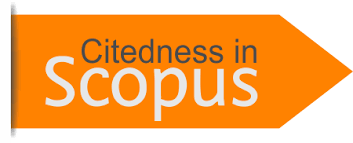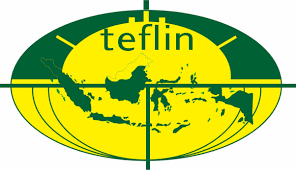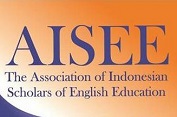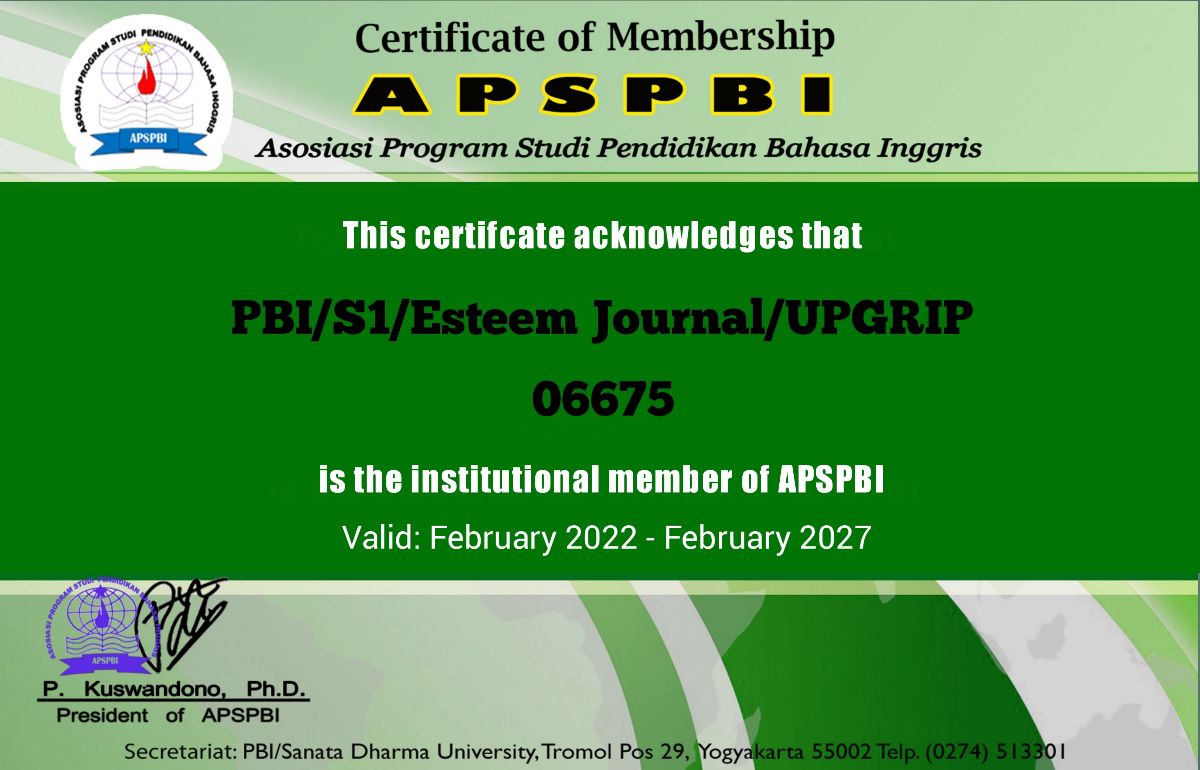The Use of Guided–Questions Combined with Buzz Group Technique to Increase Students’ Writing Skill of SMP Muhammadiyah Pagaralam
DOI:
https://doi.org/10.31851/esteem.v4i2.6182Keywords:
guided question buzz group technique, writing skillAbstract
Buzz Group Tehcnique  are a technique in teaching which divide students into a group activity in which groups of students have a brief discussion (for example, five minutes) to generate ideas or answer specific questions.  Buzz group can be used in many different ways and are most often used in combination with other techniquesâ€. In this research the writer will combined two kinds of technique, Guided-question Combined with Buzz Group Technique. Guided-question Combined with Buzz Group Technique means combine two kinds of technique in teaching learning process those are Guided-question with Buzz Group Technique to enhance both techniques. The research design used in this study was one-group pre test-post test design. The study employed both quantitative and qualitative data analyses from pre-and post-tests, a questionnaire, and an interview. The participants of the study were 35 first-year students enrolling in a compulsory reading course called Communication and Reading Skills at Darussalam Polytechnic of Palembang. It is shown shown by a significant difference in quality of students’ in-class written experimental designs between the treatment and control groups (19.943 versus 17.943; p>0.0489). However, draft (22.337 versus 18.929; p>0.0760) and paper grades (27.186 versus 27.971; p>0.6726) did not vary significantly whether or not students were provided with the guided questions. There were several intervening and potentially confounding factors, due to the nature of the paper writing process in our labs, which included peer review of paper drafts that were not limited to students within the treatment and control groups.. The results suggested that 1) The English writing ability post test mean score of students was higher than the pre test mean score at the 0.05 level of significance; 2) most students were satisfied with their own writing ability; 3) they enjoyed working in group and agreed that mind mapping technique was a useful technique and can be applied to non- English subjects. Findings and implications for further research are discussion.
Â
References
Axelord, R. B., & Cooper, R. G. (2010). The ST. Martin’s Guide to Writing. New York: Martin’s Press.
Baxter, A. (1997). Evaluating Your Students. London: Richmond Publishing.
Brewer, W. E. (1997). 13 Proven Ways to Get Your Message Across. Thousand Oaks, California : Corwin Press, Inc.
Brown, H. D. (2000). Principles of Language Learning and Teaching, Fourth Edition. San Francisco State University: Addison Wesley Longman, Inc.
Brown, H. D. (2003). Language Assessment Principles and Classroom practice. San Francisco, CA: Pearson.
Cohen, L., Manion, L., & Morrison, K. (2000). Research Methods in Education Fifth edition. London: RoutledgeFalmer.
Crystal, D. (2003). English as a global language Second edition. United States of America: Cambridge University Press, New York.
Dzaqirotun, T. (2008). A Study on Teaching Listening Skill Using Guided Questions for the Seventh Year Students of SMPN 1 Gemolong (Bachelor Degree of Education in English Department, School of Teacher Training and Education Muhammadiyah University of Surakarta, 2008).
Ferliansyah, Y. (2014). Developing Students’ Writing Skill Through TTW (Think, Talk, Write) Strategy on Narrative Text to the Eighth Grade Students of SMP PGRI Pagaralam (Undergraduated thesis, College for Teachers Training and Education of Muhammadiyah Pagaralam, 2014).
Fraenkel, R. J., & Wallen, E. N. (2009). How to Design and Evaluate Research in Education Seventh Edition. New York : McGraw-Hill.
Fraenkel, R. J., Wallen, E. N., & Hyun, H. H. (2012). How to Design and Evaluate Research in Education Eighth Edition. New York : McGraw-Hill.
Harmer, J. (2001). How to Teach English. Malaysia: Pearson Education Limited.
Heaton, J. B. (1990). Writing English Language Test. London: Longman Ltd.
Inderawati, R., & Hayati, R. (2011). Short-Term Training Model of Academic Writing to High School Teachers. 2nd International Conference on Foreign Language Learning and Teaching. Language Institute, Thammasat University.
Jaya, A. 2017. Sentence Patterns of Narrative Text in English Textbook in Indonesia. English Community Journal. 1 (2).
Johnson, P. A. (2008). Teaching reading and writing : a guidebook for tutoring and remediating students. United Kingdom: Andrew P. Johnson.
Kurniawan, I. (2009). Using Pictures and Guided Questions in Teaching Descriptive Writing at the Odd Semester of VIII Grade Students at SMPN 111 Jakarta (Requirements for the Degree of Strata I, The Faculty of Tarbiyah and Teachers’ Training Syarif Hidayatullah State Islamic University Jakarta, 2008).
Linse, T. C. (2005). Practical English Language Teaching: Young Learners. New York: McGraw-Hill Companies, Inc.
Mutiara, R. (2014). Teaching Descriptive Text Writing Through Guided WH-Questions: A Pre-experimental Study At The Eight Grade Students of SMP Negeri 7 Pontianak In Academic Year 2013/2014. WKS: Studies on English Language and Education, 1, ISSN: 2356-3052.
Nunan, D. (2001). Designing Task for Communicative Classroom. Cambridge University Press.
Oxford Learner’s Pocket Dictionary. (2011). Oxford University Press.
Patel, M. F. Dr., & Jain, M. P. (2008). English language Teaching (Methods, Tools & Techniques). Vaishali Nagar, Jaipur: Sunrise Publishers & Distributors.
Raimes, A. (1983). Techniques in Teaching Writing. New York : Oxford University Press.
Richards, C. J., & Renandya, A. W. (2002). Methodology in Language Teaching An Anthology of Current Practice. United States of America: Cambridge University Press.
Richards, C. J., & Schmidt, R. (2010). Longman Dictionary of Language Teaching and Applied Linguistics. Malaysia: Pearson Education Limited.
Sinaga, C. (2012). Improving Students’ Achievement in Writing Descriptive Paragraph through the Five Sense Technique.
Sugiyono. (2012). Metode Penelitian Pendidikan. Bandung: Alfabeta.
Suwarningsih. (2014). The Effectiveness of Teaching Reading Comprehension in Recount Text by Using Experience Text Relationship Method at Eight Grade Students of SMP N 6 Pagaralam. (Undergraduated thesis, College for Teachers Training and Education of Muhammadiyah Pagaralam, 2014).
Ur, Penny. (1999). A Course in Language Teaching. United Kingdom: Cambridge University Press.
Wardani, I., Basri, H., & Waris, A. (2014). Improving the Ability in Writing Descriptive Text Through Guided-Questions Technique. E-Journal of English Language Teaching Society (ELTS), 2, No. 1 2014 – ISSN 2331-1841.
Weigle, C., S. (2002). Assessing Writing. United Kingdom: Cambridge University Press.
Downloads
Published
Issue
Section
License
Copyright Notice
Authors who publish with this journal agree to the following terms:
In order to assure the highest standards for published articles, a peer review policy is applied. In pursue of the compliance with academic standards, all parties involved in the publishing process (the authors, the editors and the editorial board and the reviewers) agree to meet the responsibilities stated below in accordance to the Journal publication ethics and malpractice statement.
Duties of Authors:
- The author(s) warrant that the submitted article is an original work, which has not been previously published, and that they have obtained an agreement from any co-author(s) prior to the manuscript’s submission;
- The author(s) should not submit articles describing essentially the same research to more than one journal;
- The authors(s) make certain that the manuscript meets the terms of the Manuscript Submission Guideline regarding appropriate academic citation and that no copyright infringement occurs;
- The authors(s) should inform the editors about any conflict of interests and report any errors they subsequently, discover in their manuscript.
Duties of Editors and the Editorial Board:
- The editors, together with the editorial board, are responsible for deciding upon the publication or rejection of the submitted manuscripts based only on their originality, significance, and relevance to the domains of the journal;
- The editors evaluate the manuscripts compliance with academic criteria, the domains of the journal and the guidelines;
- The editors must at all times respect the confidentiality of any information pertaining to the submitted manuscripts;
- The editors assign the review of each manuscript to two reviewers chosen according to their domains of expertise. The editors must take into account any conflict of interest reported by the authors and the reviewers.
- The editors must ensure that the comments and recommendations of the reviewers are sent to the author(s) in due time and that the manuscripts are returned to the editors, who take the final decision to publish them or not.
Authors are permitted and encouraged to post online a pre-publication manuscript (but not the Publisher final formatted PDF version of the Work) in institutional repositories or on their Websites prior to and during the submission process, as it can lead to productive exchanges, as well as earlier and greater citation of published work (see The Effect of Open Access). Any such posting made before acceptance and publication of the Work shall be updated upon publication to include a reference to the Publisher-assigned DOI (Digital Object Identifier) and a link to the online abstract for the final published Work in the Journal.





























